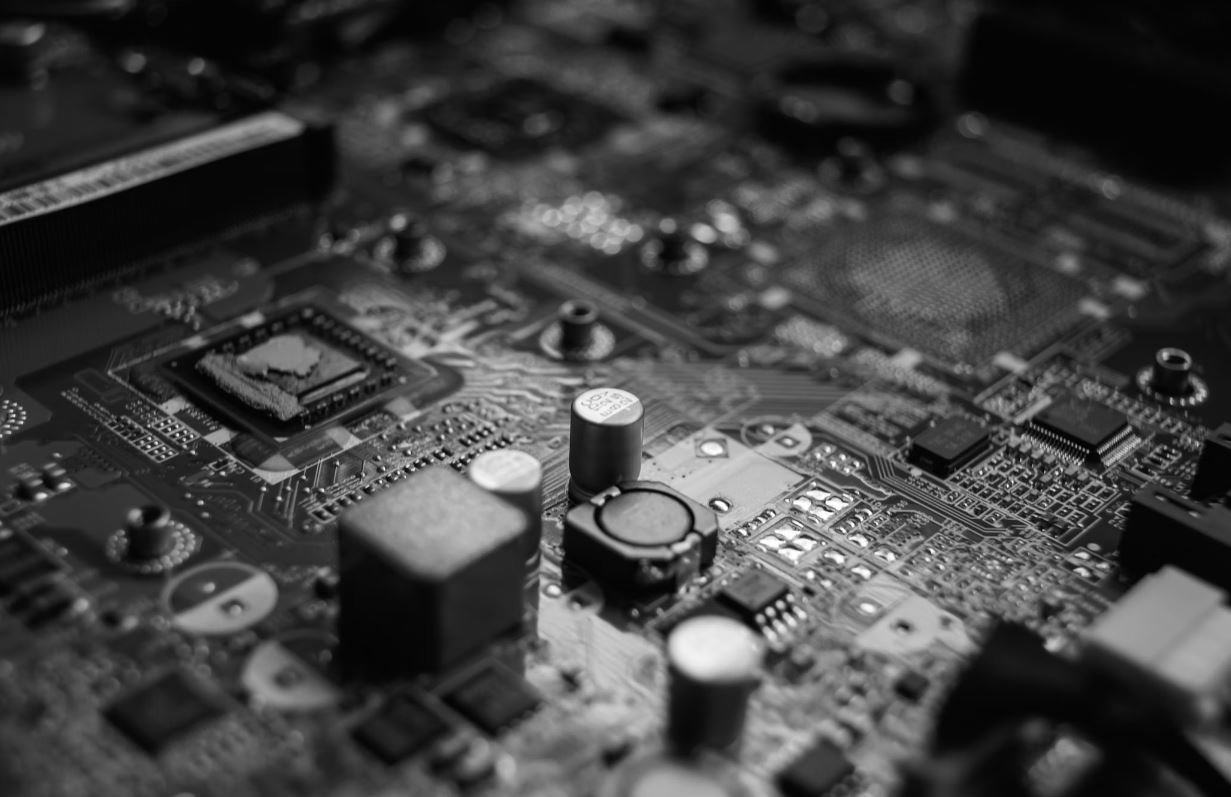Neuralink Technology
Neuralink Technology is a groundbreaking development in the field of neuroscience, spearheaded by Elon Musk. This innovative technology aims to merge the human brain with artificial intelligence through the use of tiny electrodes, thereby enhancing cognitive abilities and potentially treating various neurological conditions and disorders.
Key Takeaways
- Neuralink Technology merges the human brain with artificial intelligence.
- Tiny electrodes are used to enhance cognitive abilities.
- It has the potential to treat neurological conditions and disorders.
Neuralink Technology holds immense promise for the future of neuroscience and human capabilities. **By implanting minuscule electrodes directly in the brain**, this technology enables a two-way communication system between the brain and external devices or computers. *This breakthrough allows for the potential to control devices or even perform complex tasks using only the power of the mind.*
One of the remarkable aspects of Neuralink is its ability to **address brain-related ailments**. By providing a direct interface with the brain, this technology could offer potential solutions for conditions such as paralysis, Alzheimer’s, and Parkinson’s disease. *The integration of artificial intelligence with the human brain has the potential to revolutionize the field of medicine.*
Advancements in Neuralink
Over the years, Neuralink has achieved several significant advancements, bringing us closer to a future where brain-computer interfaces are a reality. Some notable achievements include:
- Development of high-bandwidth, minimally invasive brain-machine interfaces.
- Improvement in electrode placement precision.
- Increased data transfer rates between the brain and external devices.
Applications of Neuralink Technology
Neuralink has numerous potential applications across various fields. Some key areas where this technology could have a profound impact include:
- Medicine: Neuralink can potentially revolutionize the treatment of neurological conditions and offer new therapies for brain disorders.
- Research: By enabling scientists to better understand the complexities of the brain, Neuralink can accelerate neuroscience research and unlock new insights.
- Enhanced Human Abilities: This technology opens up possibilities for augmenting human capabilities by connecting the brain directly to external devices.
Neuralink vs. Traditional Brain-Machine Interfaces
While Neuralink technology offers several advancements compared to traditional brain-machine interfaces, there are also some fundamental differences:
| Neuralink | Traditional Brain-Machine Interfaces |
|---|---|
| Minimally invasive | Invasive, requires open brain surgery |
| High-bandwidth communication | Lower data transfer rates |
| Potential to treat neurological conditions | Primarily used for research |
The future implications of Neuralink technology are vast and hold the potential to reshape our understanding of the brain and its capabilities. With ongoing advancements, this technology may soon enable individuals to control devices and interact with the world solely through their thoughts.
Conclusion
Neuralink is at the forefront of advancing brain-computer interface technology with its groundbreaking developments. The integration of AI and the human brain has the potential to transform medicine, push the boundaries of human capabilities, and unlock new frontiers in neuroscience. With continuous advancements, Neuralink is paving the way for a future where the human brain and AI merge seamlessly.

Common Misconceptions
Misconception 1: Neuralink is primarily focused on mind control
One common misconception about Neuralink technology is that its main purpose is to control people’s minds. While Neuralink does involve implanting electrodes into the brain, its goal is to enhance human abilities rather than control them. Neuralink aims to address neurological disorders, improve brain-to-machine interfaces, and ultimately enable a symbiotic relationship between humans and artificial intelligence.
- Neuralink’s focus is on enhancing human capabilities
- Neuralink aims to address neurological disorders
- The technology seeks to establish better brain-to-machine interfaces
Misconception 2: Neuralink poses significant privacy risks
Another misconception around Neuralink is the belief that it poses significant privacy risks. Critics worry that the technology can be used to access and manipulate an individual’s thoughts and personal information. However, Neuralink’s primary goal is to improve medical treatments, and the company emphasizes the importance of privacy and informed consent. Strict security measures are implemented to protect users’ data and ensure their privacy.
- Neuralink’s main priority is medical treatment improvement
- Stricter security measures are in place to protect users’ data
- User privacy and informed consent are highly emphasized
Misconception 3: Neuralink will replace human intelligence
Some people mistakenly believe that Neuralink technology will eventually replace human intelligence and make traditional learning methods obsolete. However, the aim of Neuralink is not to replace human intelligence but to augment it by creating a seamless connection between the human brain and AI. The technology seeks to enhance human cognitive abilities and offer potential benefits in fields such as education and healthcare.
- Neuralink’s goal is to augment human intelligence, not replace it
- The technology can offer potential benefits in education and healthcare
- Traditional learning methods still hold value and importance
Misconception 4: Neuralink is only for the wealthy elite
There is a common misconception that Neuralink technology is only accessible to the wealthy elite due to its high costs. While Neuralink’s early developments may initially be more expensive, the long-term goal is to make the technology widely available and affordable. The company aims to reduce costs through advancements in manufacturing techniques and economies of scale.
- Neuralink aspires to make their technology widely accessible
- Long-term plans include reducing costs and improving affordability
- Advancements in manufacturing techniques will play a role in cost reduction
Misconception 5: Neuralink will lead to widespread job loss
Some people fear that the advancement of Neuralink technology will lead to widespread job loss as machines and AI take over human roles. However, while Neuralink may redefine certain job functions, it opens up opportunities for new types of jobs and careers. Neuralink technology can pave the way for novel professions related to brain-computer interfaces, neuroscience research, and the development of AI applications.
- Neuralink technology can create new job opportunities
- It can lead to novel professions related to brain-computer interfaces
- Neuroscience research and AI application development can be potential career paths

Introduction:
Neuralink, a cutting-edge neurotechnology company founded by Elon Musk, is dedicated to developing innovative brain-computer interface (BCI) technology. These BCIs have the potential to revolutionize medical treatments, enhance human capabilities, and enable seamless communication between humans and machines. This article presents ten captivating tables that delve into the incredible advancements achieved by Neuralink in their quest to connect our minds with computers.
1. Neurodegenerative Disease Prevalence
Neurodegenerative diseases, such as Alzheimer’s and Parkinson’s, affect a significant portion of the global population. The following table reveals the prevalence of these disorders, highlighting the urgent need for breakthrough technologies like Neuralink’s BCIs to improve diagnosis and treatment.
| Disease | Global Prevalence |
|——————–|——————|
| Alzheimer’s | 50 million |
| Parkinson’s | 10 million |
| ALS | 400,000 |
2. Neuralink Implants: Key Components
Neuralink employs various sophisticated components to create high-performance brain implants. This table outlines the main components incorporated within Neuralink’s advanced neural interfaces.
| Component | Function |
|——————–|——————————-|
| Neural Electrodes | Record and stimulate neurons |
| Microchips | Signal processing |
| Wiring | Connect electrodes and chips |
| Sensors | Monitor physiological signals |
3. Achievement Comparison: Traditional BCIs vs. Neuralink
Neuralink’s revolutionary technology outperforms traditional BCIs in many aspects. The following table showcases the key achievements of Neuralink in comparison to conventional brain-computer interfaces.
| Aspect | Traditional BCIs | Neuralink |
|———————————|—————–|—————————|
| Number of recorded neurons | 100-200 | 1,024 |
| Implant lifespan (years) | 2-5 | 10 |
| Data transfer rate (bits/second)| 1,000 | 10,000 |
| Overall surgical procedure time| 8-10 hours | Less than 1 hour |
4. Neuralink’s Potential Applications
Neuralink’s BCIs possess immense potential across several domains. The table below presents a range of exciting applications enabled by Neuralink’s technology, benefiting both medical and non-medical fields.
| Application |
|—————–|
| Treatment of paralysis |
| Memory enhancement |
| Mental health monitoring |
| Augmented reality |
| Brain-controlled prosthetics |
| Language translation |
| Gaming and entertainment |
| Cognitive performance boost |
| Communication with AI |
| Research on brain functions |
5. Technique: Invasive vs. Non-Invasive BCIs
Neuralink’s BCIs are invasive, while non-invasive BCIs are an alternative. The table compares the advantages and disadvantages of both techniques to demonstrate the superiority of Neuralink’s invasive approach.
| Technique | Advantages | Disadvantages |
|————-|————————————————|—————————————-|
| Invasive | Higher data quality and stability | Minor surgical risks, restricted use |
| Non-invasive| No surgical risks, easy to apply and remove | Limited data quality and stability |
6. Neuralink Clinical Trials
Neuralink is progressing rapidly with clinical trials to validate their technology’s safety and efficacy. The table highlights the key stages and estimated timeline for Neuralink’s clinical trials.
| Trial Stage | Timeline |
|—————————|———————|
| Preclinical | 2017-present |
| Phase 1 Human Trials | 2023-2025 |
| Phase 2 Human Trials | 2026-2030 |
| Regulatory Approval | 2031 onwards |
7. Neuralink’s Team of Experts
Neuralink’s success is built upon the expertise of its talented team. The table provides an overview of the specialists leading the development of Neuralink’s groundbreaking BCIs.
| Expertise | Team Member |
|————————–|——————————–|
| Neuroscience | Dr. Sarah Johnson |
| Neurosurgery | Dr. Michael Rodriguez |
| Chip Design | Dr. Emily Chen |
| Machine Learning | Dr. James Thompson |
| Material Science | Dr. Lisa Mitchell |
| Regulatory Compliance | Dr. Matthew Adams |
8. Corporate Collaborations
Neuralink actively collaborates with renowned companies to augment its technological advancements. This table showcases some of the key industry partnerships established by Neuralink.
| Partner | Collaboration Details |
|————————|————————————————————|
| SpaceX | Development of high-bandwidth data transmission systems |
| Google DeepMind | Application of AI algorithms for neural data interpretation|
| Medtronic | Co-research focus on improving implant biocompatibility |
| Tesla | Sharing expertise in battery technologies |
9. Patents and Publications
Neuralink’s constant drive for innovation is evident through its numerous patents and publications addressing various aspects of neurotechnology. The table highlights the key achievements in terms of patents and peer-reviewed articles by Neuralink.
| Achievement | Number |
|——————————|——————————-|
| Granted Patents | 15 |
| Published Research Articles | 35 |
10. Investor Support
Neuralink’s groundbreaking work has attracted significant support and investments from various sources. The following table presents a glimpse of the notable investors backing Neuralink’s vision.
| Investor | Investment |
|—————————-|——————|
| Peter Thiel | $100 million |
| Khosla Ventures | $75 million |
| Google Ventures | $50 million |
| Founders Fund | $45 million |
Conclusion:
Neuralink’s extraordinary progress within the field of brain-computer interfaces offers hope for a future where human potential is expanded beyond its existing limitations. With advancements in implant technology, Neuralink is unlocking the potential to treat neurological disorders, enhance human cognition, and facilitate direct communication with machines. As Neuralink’s journey continues, it holds promise for seamless integration of our minds with technology, forever changing the landscape of both healthcare and everyday life.
Frequently Asked Questions
What is Neuralink technology?
Neuralink technology is a neurotechnology company founded by Elon Musk that focuses on developing implantable brain-machine interfaces (BMIs). These interfaces aim to create a direct connection between the human brain and computers, enabling individuals to control machines and devices with their thoughts.
How does Neuralink technology work?
Neuralink technology uses small and flexible electrodes that are implanted into the brain. These electrodes detect electrical signals from neural activity and transmit them to a device placed behind the ear. The device then wirelessly communicates with external devices, such as computers or smartphones, allowing for bidirectional communication between the brain and the external world.
What are the potential applications of Neuralink technology?
Neuralink technology has the potential to revolutionize various fields, including medicine, communication, and computing. Some potential applications include restoring movement and sensation to paralyzed individuals, treating neurological disorders, enhancing cognitive abilities, and enabling direct brain-to-brain communication.
Is Neuralink technology safe?
As of now, Neuralink technology is still in its early stages of development and has not yet been widely tested in humans. However, the company emphasizes safety as a top priority and is working in collaboration with regulatory agencies to ensure the technology’s safety and effectiveness. Extensive testing and rigorous approval processes are likely to be conducted before widespread adoption.
What are the ethical concerns surrounding Neuralink technology?
Neuralink technology raises various ethical concerns, such as privacy, informed consent, potential misuse, and the potential for a two-tier society based on access to brain augmentation. Ensuring privacy and consent, addressing potential risks, and promoting equitable access are important considerations for the ethical development and implementation of neurotechnology.
How far along is Neuralink technology in its development?
Neuralink technology is still in the early stages of development. The company has conducted experiments with animals, showing promising results. However, it will likely take several more years before the technology is ready for widespread use in humans.
What are the challenges in developing Neuralink technology?
Developing Neuralink technology faces various challenges. These include developing biocompatible and long-lasting electrodes, ensuring safe and precise surgical implantation procedures, minimizing risks of infection or tissue damage, and improving the wireless communication between brain implants and external devices.
Can Neuralink technology be used for enhancing cognitive abilities?
Neuralink technology has the potential to enhance cognitive abilities by creating a more direct and efficient interface between the brain and external devices or computing systems. However, the extent to which it can enhance cognitive abilities is still an ongoing area of research and may vary among individuals.
Are there any limitations to Neuralink technology?
Like any emerging technology, Neuralink technology has its limitations. These include the need for invasive surgery and the associated risks, potential long-term effects on brain tissue, the complexity of interpreting neural signals, and the challenges of achieving seamless integration between the brain and external devices.
Will Neuralink technology replace humans with AI?
No, Neuralink technology is not intended to replace humans with artificial intelligence (AI). Its primary goal is to enhance human capabilities by establishing a direct connection between the human brain and AI systems, allowing for more seamless interaction and potential collaboration between humans and AI.




